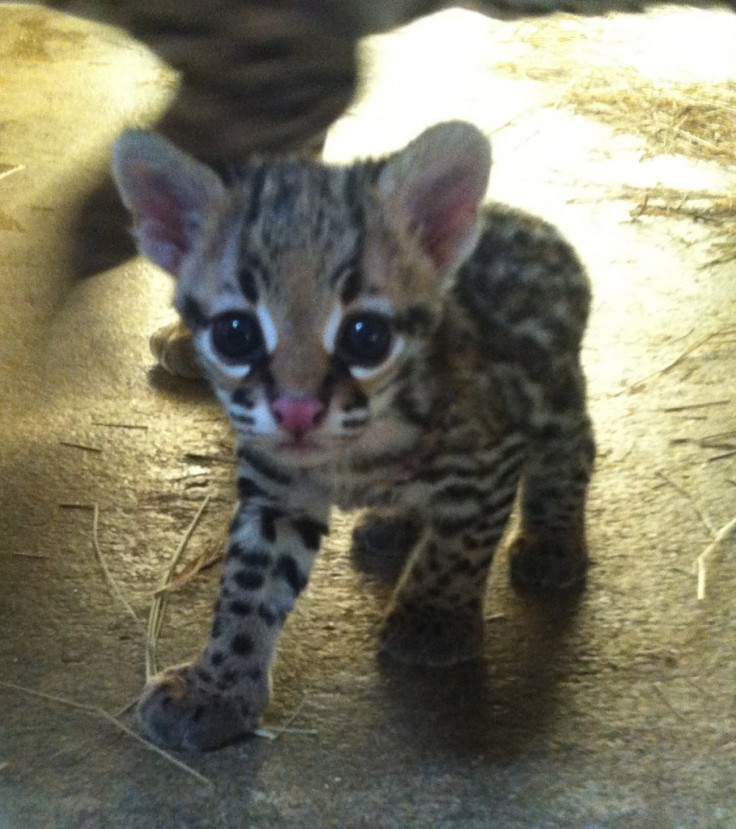Ocelot Kitten Born At Cameron Park Zoo, Aztec Considered A ‘Miracle Baby’ [PHOTOS]

Most thought Maya and Gustavo couldn’t have any more kids. The ocelot pair at the Cameron Park Zoo in Waco, Texas, were considered “past their prime” for producing offspring. But the wildcats surprised zoo officials with the arrival of another little ocelot on May 31. The officials kept the birth of baby Aztec a secret for nearly three months to prevent unwanted stress on the mother and baby as much as possible, Terri Cox, the zoo’s curator for programs and exhibits, told the Waco Tribune.
“When I opened the night house, I heard a little bit of an odd noise, and I thought, ‘What is Maya doing?’ ” Cox said of discovering Maya had given birth. “I thought she was squeaking, but it was the baby.”
Maya, who is 14 years old, is considered a mature ocelot. The species usually reaches sexual maturity at 2 to 2 ½ years old and their life expectancy is 7 to 10 years and up to 20 years in captivity, zoo officials said in a statement.
Veterinary specialists had assessed Maya and discovered she was still ovulating, showing a slight possibility of pregnancy. The team even artificially inseminated Maya back in November, but it proved unsuccessful – meaning Aztec was conceived “the old-fashioned way,” Cox said.
“He is truly a miracle baby,” zoo officials said in a statement.
After the birth, zoo officials gave Maya and her newborn some time to bond, checking in at intervals over the first 36 hours to make sure the pair was doing well.
Baby Aztec is still too small to be shown in public. Zoo officials plan on modifying the ocelots’ habitat to make it “baby friendly” since there are some dangerous spots that could allow the kitten to escape.
Ocelots, animals twice the size of an average house cat, are native to South American rainforests, but some have been found as far north as Texas, according to National Geographic. Their fur has made them a target for hunters and they are considered a protected species in the United States.
© Copyright IBTimes 2024. All rights reserved.




















